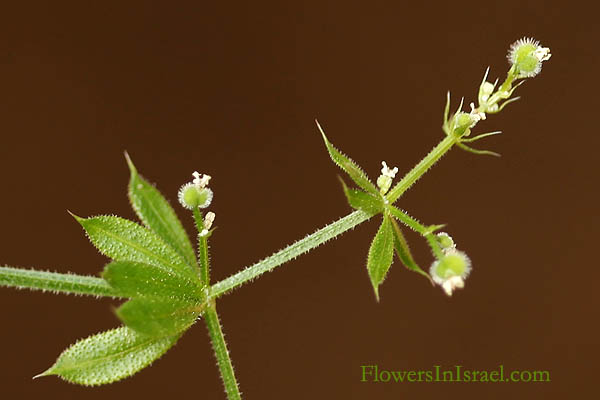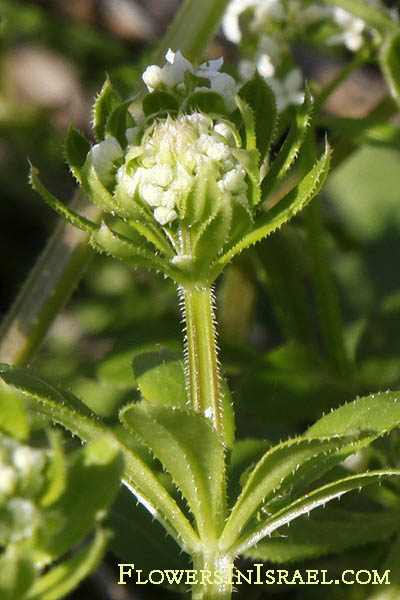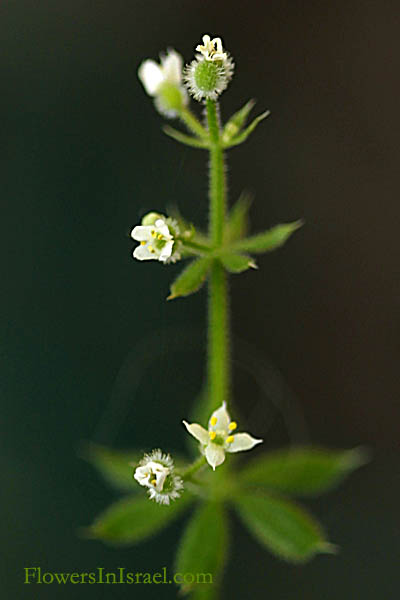Coachweed, Common Bedstraw, Catchweed, Goose Grass,
Stickywilly, Sweet Woodruff, Hebrew: דבקה זיפנית, Arabic: بلسكاء لُزيقة
| Scientific name: | Galium aparine L. | |
| Common name: | Cleavers, Clivers, Catchweed, Coachweed, Common Bedstraw, Catchweed, Goose Grass, Stickywilly, Sweet Woodruff | |
| Hebrew name: | דבקה זיפנית | |
| Arabic name: | بلسكاء لُزيقة | |
| Family: | Rubiaceae, פואתיים |

Location: Martha's Backyard |
| Life form: | Annual | |
| Stems: | Trailing, 60-120 cm; square, short bristly downward pointing hooks at corners | |
| Leaves: | Whorled; entire; smooth margin | |
| Inflorescence: | Usually 3-flowered, stalked clusters in junction of upper leaves | |
| Flowers: | White, hermaphrodite, 4-petalled tubes | |
| Fruits / pods: | Twin, fused, globe-shaped, covered with numerous hairs hooked at tip | |
| Flowering Period: | March, April | |
| Habitat: | Mediterranean maquis and forest | |
| Distribution: | Mediterranean Woodlands and Shrublands, Semi-steppe shrublands, Shrub-steppes, Deserts and extreme deserts, Montane vegetation of Mt. Hermon | |
| Chorotype: | Euro-Siberian - Med - Irano-Turanian | |
| Summer shedding: | Ephemeral |

Location: Martha's Backyard Derivation of the botanical name: Galium from Greek word gala, "milk," and alluding to the fact that certain species were used to curdle milk. aparine, Greek name for the plant called cleavers.

Location: Martha's Backyard |